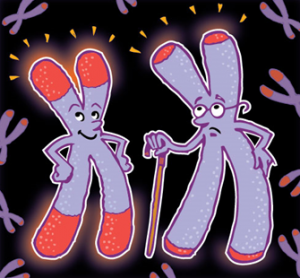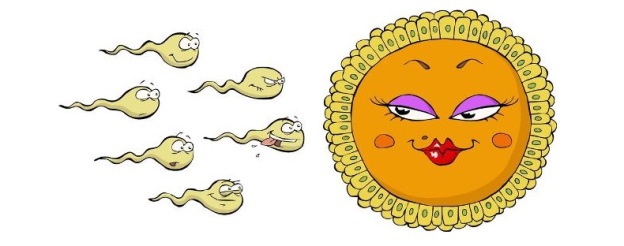It has long been thought that male fertility is not affected by age and his fertility remains the same throughout. Recent research has actually proven this to not be the case.
Whilst men are continuing to renew sperm as they age, are they as good as they used to be? It appears not, with recent research suggesting that male fertility declines with age.
Research Of Fertility in Aging Men
Whilst it is true that men continue to make sperm throughout their lives and there appear to be no age limits for men to produce a pregnancy, there are consequences of the older man fathering children.
In 2003, Mohamed Hassan and Stephen Killick researched the effect of male age on fertility and found that:
- Men 45 years of age took five times longer to get their partners pregnant than men who were 25
- When comparing men aged 30 and 50 on average, semen volume was reduced by 30%, motility was found to be reduced by 37% and sperm were 5 times more likely to be mis-shapen
- Sperm shape positively correlates with its genetic content
It has been reported that the higher number of mis-shapen sperm, the greater potential for genetic abnormalities.
In addition to this, Hassan and Killick identified that:
- When men older than 35 fathered children, there was a reported increase in genetic conditions such as dwarfism, autism spectrum disorders, and schizophrenia
- Down Syndrome births doubled among women aged 35-39 if their male partner was over 35
So why is it that there is such an impact on males as they age? Research suggests a strong correlation with male age and DNA fragmentation.
Factors Effecting Sperm DNA
There are many things that impact on the integrity of the sperm DNA including diet, the frequency of ejaculation, smoking, alcohol, caffeine intake, recreational drugs and of course aging.
Age
One of the best markers we have today of the male biological clock is an increase in DNA damaged sperm.
- At age 25, only 5 percent of a man’s sperm has DNA damage;
- However, by age 35, that percentage has increased to 20 percent
That’s a fourfold increase in just ten years!
It is important to remember that as the percentage of damaged sperm increases, the odds of fertilisation decreases.
An interesting fact to contemplate is that paternal-age risk factors aren’t really an issue when the male has a female partner of 35 or less. This is because oocytes have a built-in mechanism known as DNA repair that amazingly identifies and repairs damaged DNA that has been delivered by the sperm.
Whilst this safety mechanism exists for men with their partners who are under the age of 35, the important take home message here is that this natural phenomena starts to break down after the woman turns 35.
Telomeres
What is becoming evident is that structures called telomeres also play a significant part with male fertility.

Without the coating, shoelaces become frayed until they can no longer do their job, the same can be said for telomeres, without them the DNA strands become damaged and our cells can’t do their job.
We inherit telomeres from our parents, but no matter the length of our telomeres at birth, everyone’s get shorter as they age.
Rodrigues and colleagues in 2005 researched telomeres and male fertility and found that critically short telomeres are associated with sperm DNA fragmentation.
So, what is the relevance of DNA fragmentation? It has been reported that DNA has been associated with impaired fertilisation rates, poorer embryo and blastocyst development, lower implantation rates, and higher instances of miscarriage.
It can then be reported that male fertility is affected by age as the research suggests that as the male ages there is a:
- A longer time for pregnancy
- Sperm quality decreases
- Telomeres shorten, and
- DNA damage increases
Ways Aging Men May Improve Fertility
So is there such thing as the fountain of youth for men? To date, there has to date been no magic cure identified that will stop or even slow down the effects of aging on both male fertility, but the factors below may help to improve fertility and reduce DNA sperm fragmentation in aging men.
Lifestyle Choices
Research shows that telomere shortening can be slowed or perhaps even stopped by making healthy changes to lifestyle choices.
These health choices include reducing stress, stopping smoking, losing weight, exercising more and eating a healthier diet, including exposure to anti-oxidants such as vitamins A, C and E, and the minerals copper, zinc and selenium which neutralises the free radicals that damage cell DNA.
Telomerase
Recent research is concentrating on the relatively newly identified enzyme telomerase.
As you may recall from above, DNA strands are protected by telomeres. Telomeres are built by an enzyme called telomerase. It is thought that this enzyme may be able to turn back the biological clock.
Telomerase is in all of your cells, but in adults it’s usually turned off. The key to slowing or even reversing the aging process and therefore slowing or stopping the shortening of our telomeres is to activate telomerase. Once activated cells should then be able to begin copying again.
How can telomerase be “turned on”?
1) Increase Vitamin D Intake. As we all know, Vitamin D is called the “sunshine vitamin” for good reason. But it might soon be renamed the “telomere vitamin”.
That’s because a separate study by the American Journal of Clinical Nutrition looked at more than 2,000 women of all ages. The more vitamin D they had in their bodies, the longer their telomeres were. On top of that, people who supplemented with vitamin D had longer telomeres than those who didn’t.
2) Eat Foods That Contain Telomerase. Many cruciferous vegetables – such as broccoli, cabbage, kale, broccoli and sprouts – contain telomerase.

Conclusion
As women and men delay childbearing, there is now an unrealistic expectation that medical science can undo the effects of aging – unfortunately even with IVF this is not so.
The take home message today is whilst Assisted Reproductive Technology has come a long way over the last few decades; IVF won’t and does not fix everything for everyone.
In summary:
- The average time to pregnancy if a man is under 25 is around 4.5 months but nearly two years if a man is over 40
- There is a five-fold increase in time to pregnancy if the male partner is aged over 45 years
- For couples having IVF, the risk of not having a baby is more than five times higher if the male partner is aged 41 or older
- The volume of a man’s semen and sperm motility decrease continually between the ages of 20 and 80
- The risk of miscarriage is twice as high for women whose male partner is aged over 45 than for those whose partners are under 25
- Children with fathers aged 40 or older are more than five times as likely to have a genetic condition than children fathered by men aged under 30
While men continue to produce sperm throughout their lives quality is compromised. Men under the age of 40 have an increased chance of producing a pregnancy and a healthy baby compared to men who are over 40.
References
Hassan, Mohamed A.M and Killick, Stephen, 2003, Effect of male age on fertility: evidence for the decline in male fertility with increasing age, Fertility and Sterility, Volume 79, Supplement 3, June 2003, Pages 1520-1527
Rodriguez, S., Goyanes, V., Segrelles, E., Blasco, M., Gosalvez,J. & Fernandez, J. L. (2005) Critically short telomeres are associated with sperm DNA fragmentation. Fertility and Sterility 84, 843–845.
Courtney W. Hanna , Karla L. Bretherick, Jane L. Gair, Margo R. Fluker, Mary D. Stephenson, and
Wendy P. Robinson, Telomere length and reproductive aging, 2009, Human Reproduction, Vol.24,
No.5 pp. 1206–1211


